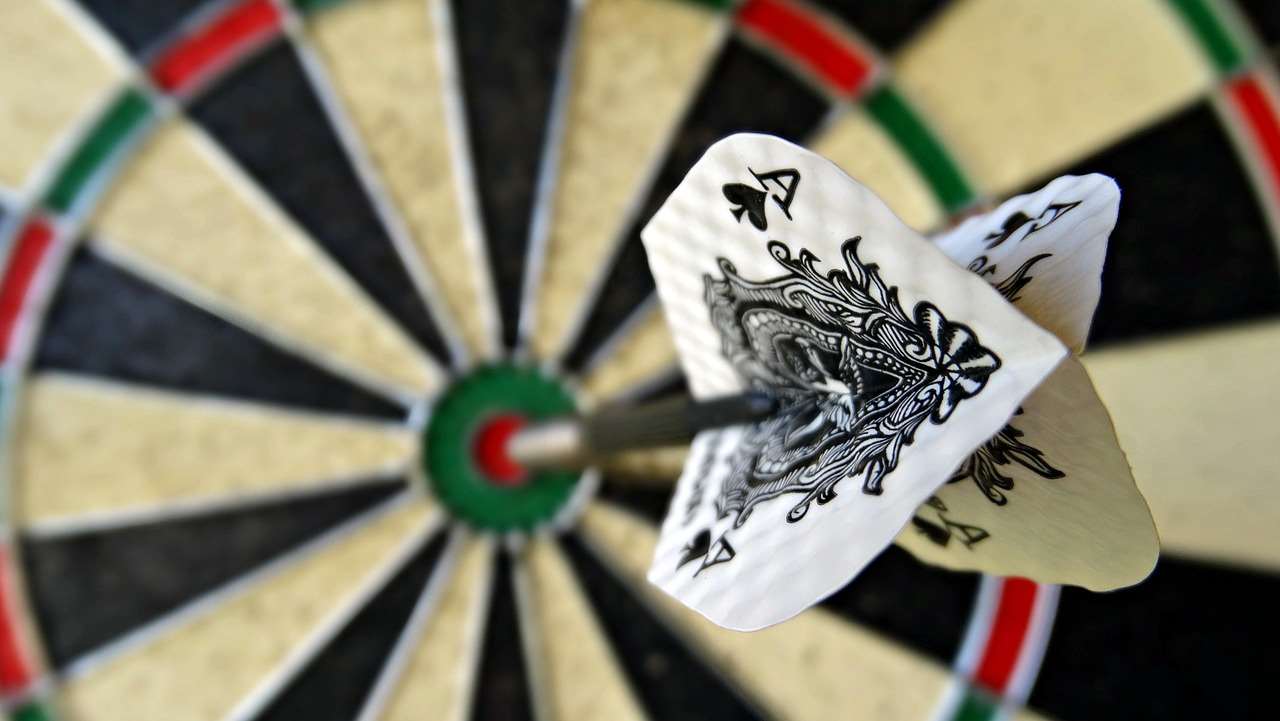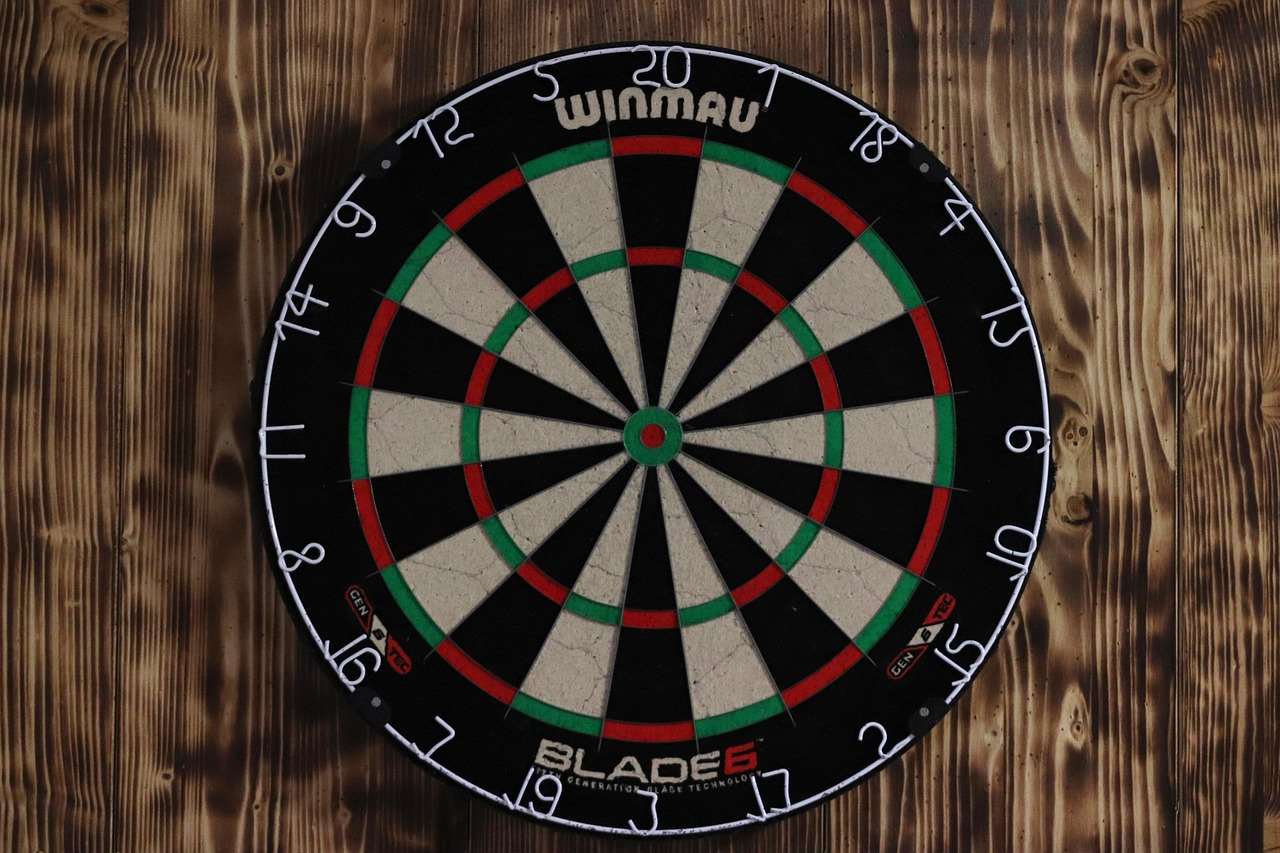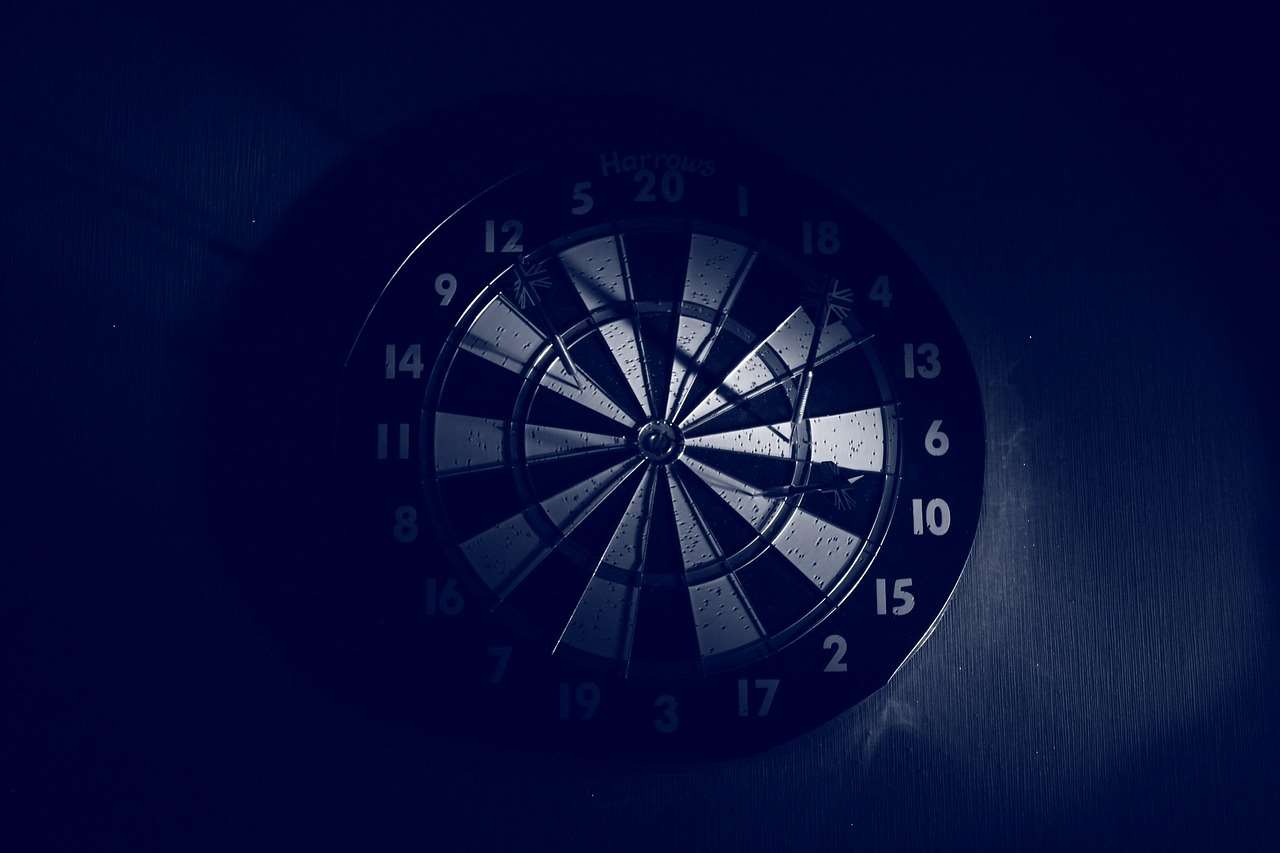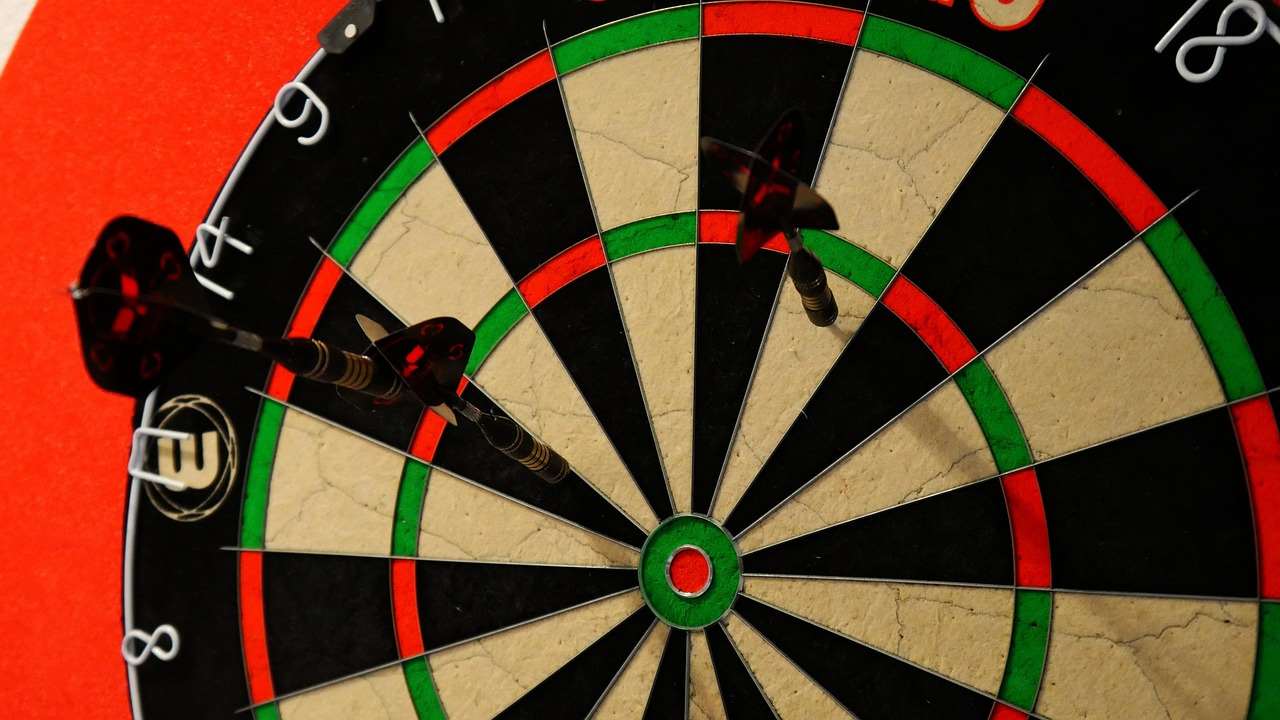Understanding English Cricket partnership scoring is crucial for appreciating the nuances of this darts game. In essence, partnerships aim to close out numbers strategically to accumulate the highest score. This article delves into the intricacies of partnership dynamics, scoring methods, strategic considerations, and common pitfalls to avoid, empowering you to master this exciting variation of darts.
⚠️ Still Using Pen & Paper (or a Chalkboard)?! ⚠️
Step into the future! The Dart Counter App handles all the scoring, suggests checkouts, and tracks your stats automatically. It's easier than you think!
Try the Smart Dart Counter App FREE!Ready for an upgrade? Click above!
Understanding the Basics of English Cricket Partnership Scoring
Before diving into the complexities of partnership strategies, it’s important to establish a solid understanding of the fundamental rules of English Cricket. Essentially, each player (or pair of players in a partnership) aims to “close out” specific numbers on the dartboard – typically 20, 19, 18, 17, 16, 15, and the bullseye (which counts as two separate numbers, 25 and 50).
To close a number, a player must score three marks on that number. These marks can be achieved through single, double, or treble hits. Once a number is closed by a player or partnership, it becomes ‘owned’ by them. If the opposing player(s) have not closed the same number, any subsequent hits on that number by the owning player(s) will score points. If both sides have closed a number, it is ‘dead’ and no further points can be scored on it.

The game continues until one player or partnership closes all the required numbers and has a higher score than their opponents. If a player closes all numbers but is behind on points, they must continue playing to catch up, risking the other side scoring. This is a critical aspect of English Cricket that requires strategic planning and execution.
Key Concepts in English Cricket
- Closing a Number: Hitting a number three times to make it your own.
- Owning a Number: Having closed a number while the opponent has not.
- Scoring Runs: Hitting an owned number to accumulate points.
- Dead Number: A number closed by both sides, rendering it unscorable.
Strategic Considerations for English Cricket Partnership Scoring
In the context of partnership play, the strategies involved in English Cricket partnership scoring become even more nuanced. Communication and coordination between partners are paramount. It’s vital to decide who will focus on closing which numbers and when to switch between closing and scoring. A good partnership will leverage each player’s strengths and compensate for weaknesses. Understanding the English Cricket darts strategy tips can provide an edge.
One common strategy is for one partner to focus primarily on closing numbers while the other focuses on scoring runs, particularly if one player is a more consistent scorer than the other. Another tactic is to have one player target the higher numbers (20, 19) while the other targets the lower numbers (16, 15, bullseye). This diversifies their attack and makes it more difficult for the opposing team to defend.
Teamwork and clear communication are vital. Before each round, the partners should briefly discuss their strategy: which numbers to target, whether to focus on closing or scoring, and how to react to the opponent’s moves. Non-verbal cues and signals can also be helpful during play, but clear communication is essential.
Consider the psychological aspect as well. By applying pressure and forcing mistakes, a strong partnership can disrupt the opponents’ rhythm and gain a significant advantage. Observe the opponents’ tendencies: which numbers do they prefer to target? Are they consistent scorers? Are they prone to making errors under pressure? Use this information to tailor your strategy and exploit their weaknesses.

Maximizing Your Score in English Cricket Partnerships
Maximizing your score in English Cricket partnership scoring requires a combination of accuracy, strategic thinking, and a clear understanding of probability. It’s not enough to simply hit the numbers; you need to hit them at the right time and in the right way. Remember that hitting triples and doubles are very important for quickly closing numbers.
One key aspect of maximizing your score is efficient closing. The faster you can close all the required numbers, the sooner you can start scoring runs. Prioritize the numbers that you are most confident in hitting, and don’t be afraid to switch targets if a particular number is proving difficult. If you are trying to scoring runs English Cricket darts you will need to be precise in where you are landing the darts.
Another important factor is controlling the board. By closing key numbers before your opponents, you can restrict their scoring opportunities and force them to play defensively. This can give you a significant psychological advantage and make it easier to dictate the pace of the game. Be mindful of which numbers the opponents are targeting and try to close them off before they can do so.
Tips for Score Maximization:
- Prioritize Accuracy: Consistent hitting is more important than chasing high scores early on.
- Strategic Targeting: Choose numbers wisely based on your strengths and the opponent’s weaknesses.
- Efficient Closing: Aim to close numbers quickly and minimize wasted darts.
- Board Control: Close key numbers to limit opponent scoring opportunities.
- Calculate Risk: Weigh the potential rewards of scoring against the risk of leaving open numbers for your opponents.
Common Mistakes to Avoid in English Cricket Partnership Scoring
Even experienced darts players can fall victim to common mistakes in English Cricket partnership scoring, particularly when playing in partnerships. Avoiding these pitfalls can significantly improve your chances of success. One of the most common mistakes is a lack of communication. As discussed before, it is imperative to talk strategy with your teammate.
Another common mistake is over-aggressiveness. It’s tempting to focus solely on scoring runs, but neglecting to close your numbers can leave you vulnerable. If the other team closes out first you will have wasted all your opportunities to score points. A balanced approach is key: close numbers strategically and score runs when the opportunity arises. Similarly, being overly passive can also be detrimental. Waiting too long to start scoring can allow your opponents to build up a significant lead. It is useful to know the target numbers English Cricket game to know what to close out.
A third mistake is poor target selection. Hitting the same number repeatedly without closing it is a waste of darts. If you are struggling to hit a particular number, switch targets and come back to it later. Similarly, targeting numbers that are already closed by both sides is a pointless exercise.

Ignoring the opponent’s strategy is another common mistake. Pay attention to which numbers your opponents are targeting and try to counter their moves. Don’t allow them to close off key numbers without a fight. Also, be adaptable. Your initial strategy may need to be adjusted based on the flow of the game. If your opponents are playing particularly well, you may need to switch to a more defensive strategy.
Advanced Strategies for English Cricket Partnership Scoring
For seasoned players looking to elevate their game, mastering advanced strategies in English Cricket partnership scoring is essential. These tactics involve a deeper understanding of probability, risk assessment, and psychological warfare. One advanced strategy is the “sacrificial close.” This involves deliberately closing a number that the opponent is targeting, even if you haven’t closed all your own numbers. This can disrupt their scoring plans and force them to play defensively.
Another advanced strategy is the “intentional miss.” This involves deliberately missing a target to set up a better scoring opportunity on the next dart. For example, if you need one more mark to close a number, you might intentionally miss the treble and hit the single instead, leaving yourself with two darts to score runs on the next turn. Also, consider the English Cricket darts rules.
Psychological tactics play a significant role at the highest levels of competition. This can involve using body language, verbal cues, and strategic pauses to intimidate your opponents and disrupt their concentration. However, it’s important to stay within the bounds of fair play and avoid any behavior that could be considered unsportsmanlike.
Anticipating your opponent’s moves is crucial. Try to predict which numbers they will target next and plan your strategy accordingly. This requires careful observation and a deep understanding of their playing style. This may take some time to fully implement.
Advanced Tactical Summary
- Sacrificial Close: Close a number the opponent targets, even at your detriment.
- Intentional Miss: Set up a better scoring opportunity later.
- Psychological Warfare: Use legal tactics to disrupt the opponents (use with caution!).
- Anticipate Opponent Moves: Predict targets and prepare countermeasures.

Practice Drills for English Cricket Partnership Scoring
Consistent practice is key to improving your English Cricket partnership scoring skills. However, simply throwing darts aimlessly won’t be enough. You need to incorporate specific practice drills that target key aspects of the game, such as accuracy, closing, and scoring.
One effective drill is the “close-and-score” drill. This involves setting a target number (e.g., 20) and practicing closing it as quickly as possible. Once you have closed the number, immediately switch to scoring runs on that number for a set number of rounds. This drill helps to improve both your closing and scoring skills and simulates the dynamic nature of the game.
Another useful drill is the “pressure closing” drill. This involves setting a timer and trying to close all the required numbers within a certain time limit. This drill helps to improve your accuracy under pressure and forces you to make quick decisions. You might also try the Darts Variants Fun Games.
Partner-specific drills can be particularly beneficial for improving communication and coordination. For example, you can practice calling out targets for each other and taking turns closing and scoring. This helps to build trust and develop a shared understanding of each other’s strengths and weaknesses.
Record your progress. Keep track of your scores, closing times, and accuracy rates. This will help you to identify areas where you need to improve and track your progress over time. Also try different types of darts.

Conclusion
Mastering English Cricket partnership scoring requires a blend of fundamental knowledge, strategic thinking, skillful execution, and consistent practice. By understanding the rules, developing effective partnership strategies, avoiding common mistakes, and incorporating advanced tactics, you can significantly improve your chances of success. Remember that communication, coordination, and adaptability are essential ingredients for a successful partnership. Embrace the challenge, refine your skills, and enjoy the thrill of competition. Now go out there, practice these strategies, and dominate the dartboard! Consider researching different types of boards.
Hi, I’m Dieter, and I created Dartcounter (Dartcounterapp.com). My motivation wasn’t being a darts expert – quite the opposite! When I first started playing, I loved the game but found keeping accurate scores and tracking stats difficult and distracting.
I figured I couldn’t be the only one struggling with this. So, I decided to build a solution: an easy-to-use application that everyone, no matter their experience level, could use to manage scoring effortlessly.
My goal for Dartcounter was simple: let the app handle the numbers – the scoring, the averages, the stats, even checkout suggestions – so players could focus purely on their throw and enjoying the game. It began as a way to solve my own beginner’s problem, and I’m thrilled it has grown into a helpful tool for the wider darts community.